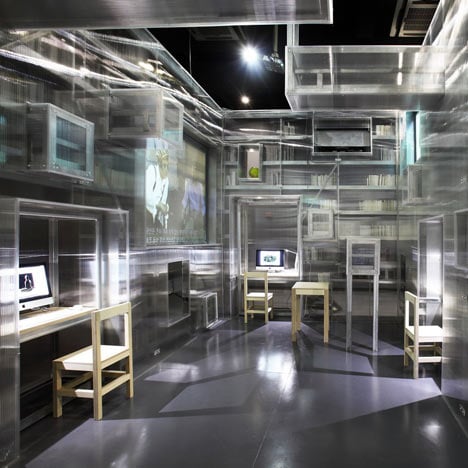
Nam June Paik Library by N H D M
The public library for an arts centre in South Korea is condensed into a cube at the centre of a room.
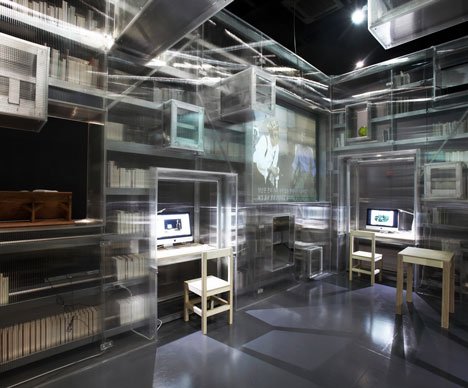
American architecture studio N H D M designed the translucent block, dubbed the Library Machine, to store the multimedia archive for the Nam June Paik Art Centre in the city of Yong-In.
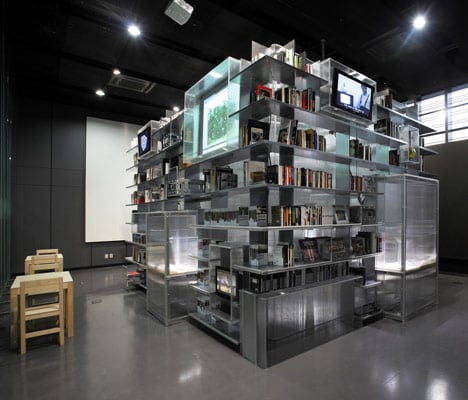
Reading areas, computer stations and video screens are integrated inside the cube, while books and paper archives are stored on the shelves between them.
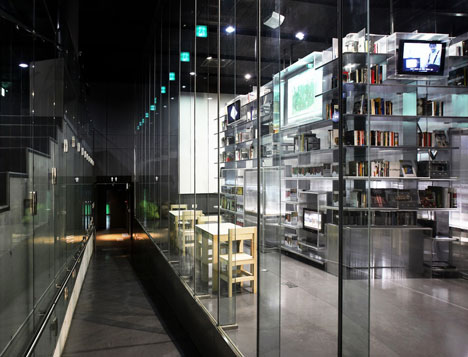
Extra tables and chairs can be placed around the library to provide additional workstations when necessary.
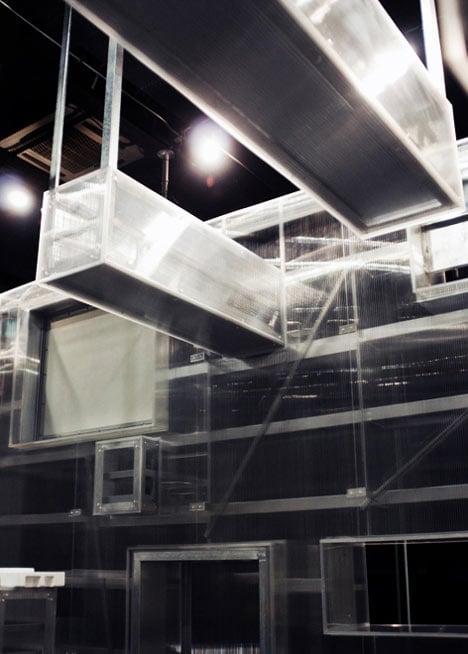
Other interesting libraries we've featured recently include one covered in firewood and another made of shelves - see more here.
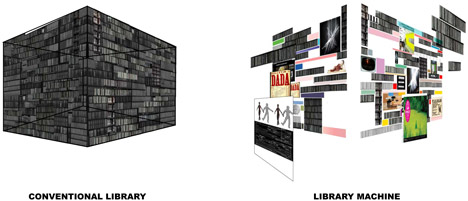
Photography is c/o Nahyun Hwang and David Eugin Moon of N H D M.
Here's some more text from the designers:
The Nam June Paik Library is a new public art library in Nam June Paik Art Center in Yong-In, Korea, open to general public on April 15th, 2011. The library was designed by a U.S. based design and research collaborative N H D M / Nahyun Hwang + David Eugin Moon. The library collects, preserves, and provides access to historical and contemporary material related to Nam June Paik and his art. It offers to scholars a space for professional research, and to the local community an open forum for cultural engagement. The library houses and circulates the Center's Nam June Paik Archives Collection, Nam June Paik Video Archives, and a rare Fluxus Footages Collection, as well as the user generated materials. The design and construction of the library was made possible by City of YongIn and Gyeoggi Province Government's Small Library Fund.
Inspired by Nam June Paik’s artistic processes, the goal of the project was to design a multi-functional spatial device, which redefines the relationship between library users and information. While the conventional library is characterized by the one directional transmission of information, where the static, centralized, and predefined content is passively received by the readers, the Nam June Paik Library aims to promote non-linear and random access to information, to stimulate production of information beyond consumption and advocates spontaneous expression and juxtaposition of ideas.
The Library Machine located in the center of the library deploys the following 6 architectural and programmatic devices.
1. Scattering
The juxtaposition of the dispersed information produces complexity that contrasts the simple geometric initial form.
2. Non-Textual Content / Off-Site
Objects related to Paik’s work are scattered, plugged, and mapped throughout the surface of the machine. Reprogrammable dynamic media can communicate Paik’s previous works, as well as information on artistic and other happenings from the off-site locations of interest.
3. Physical Engagement
Additional storage areas and unique shelving in the long drawers are incorporated to help the future expansion of the collection, while inducing curiosity, interactivity, and playful engagement.
4. Production Lab
Inside the machine is reading, installation, video laboratories, and a space also for debates and group workshops.
5. “Representation Cells”
Content is also generated by users who can contribute to the information exchange. Small spaces or vitrines are made available for public display.
6. Library “Machinettes,” The Propagation Aides
Parts of the machine can detach as independent modules and can freely travel to other rooms or even outdoors to perform communicative functions, such as video projections or sound performances.
The design attempts to make the intangible physical and to turn a personal experience to a collective and interactive one. Through the Library, the contents become dynamic, and the consumer of information becomes the producer. The collective generation and appreciation of information makes the library experience multi-directional and reciprocal.